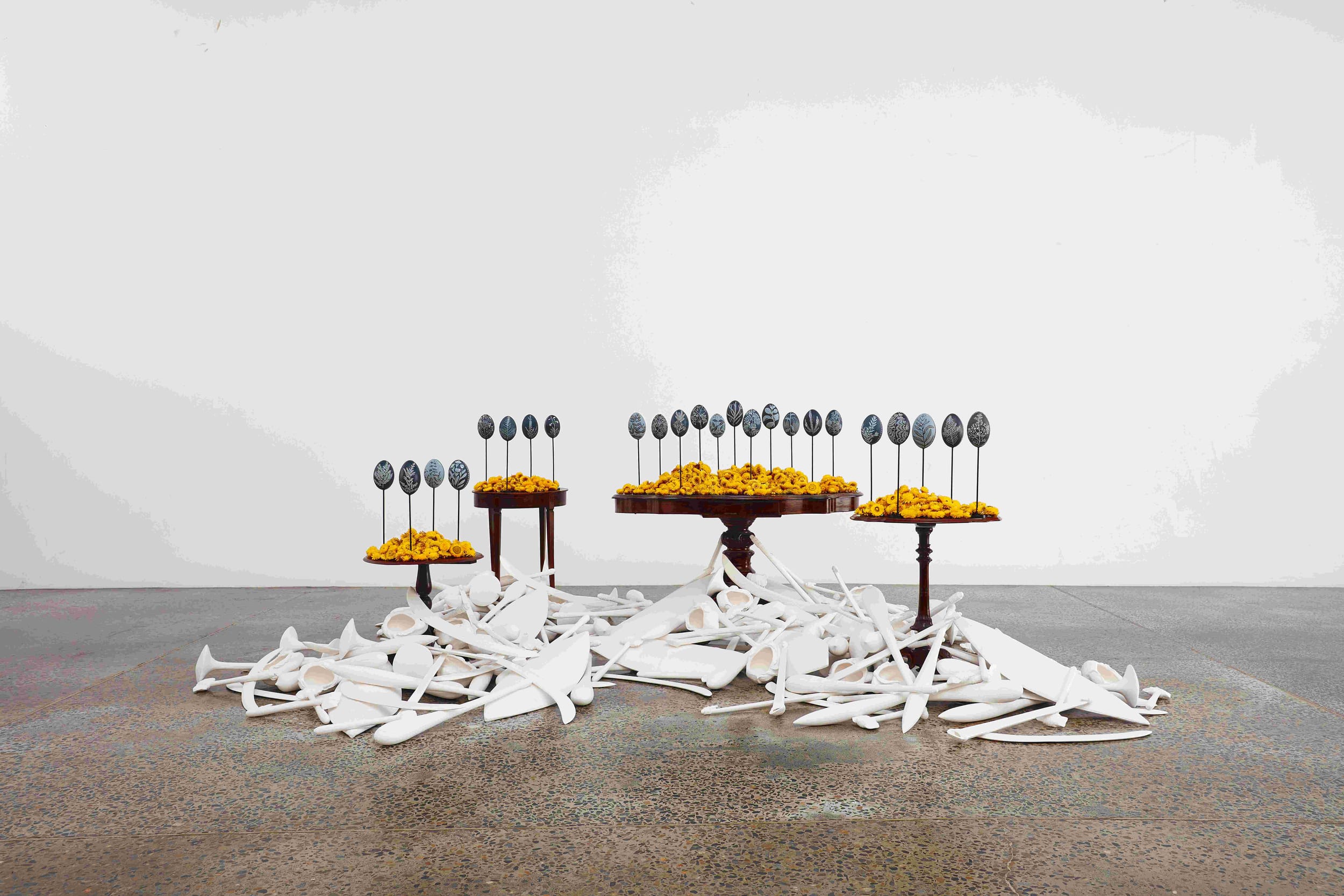
Bruce Pascoe applauds an Indigenous imagining of Australian history in which the white conquerors were artists and scientists.
The time since the referendum has been tough. I am tired, tired of the treadmill of explanation, the exposition of Australia’s real history to a reluctant, truculent audience. So, when I opened a parcel and saw Jonathan Jones’s new book, untitled (transcriptions of country), there was a glimmer in my heart: what has the skinny ratbag done this time?
Well, what he’s done is put together a typically idiosyncratic tome that cheekily imagines a French past for Australia rather than the English misery we have endured. Launched late last year, this door-stopping 520-page book expands on Jones’s exhibition of the same name that showed in Paris in 2021 and in Sydney in December last year.
The Wiradjuri and Kamilaroi artist looks at the trade and translation of Aboriginal portraits, cultural objects, music, plants and animals collected during the 1800-1803 French expedition to Australia led by Captain Nicolas Baudin. A large and extraordinary collection was taken back to France where some of it remains, though much was dispersed or vanished.
In his extensive research, Jones trawled through all the journals of Baudin’s voyage. He shows the remarkably different attitude the French brought to their observation of Australia and Australians.
Baudin’s party were generous and polite and some wonder how Australia might have developed under a differently designed red, white and blue flag. Well, I think the answer is exactly the same, but with better bread.
Baudin came with a group of artists, botanists, scientists, geographers and cartographers. On board Géographe and Naturaliste there were no hangmen, no white-shoe brigade, no bankers, politicians or generals. All of the above could be found in large numbers in France; it was only the nature of the expedition that prevented those rascals from being on board.
Baudin’s expedition was for science and curiosity and the company of tourists was kindly, learned and largely indolent. If they had come to conquer Australia as the British had, the company wouldn’t have been able to hear each other speak for the noise of all the sword-sharpening and the coins being rubbed together.
Jones’s book shows almost no swords or coins, instead focusing on the French art and science. To read it is to wonder if it describes events in the same era as Cook and Phillip.
I am reasonably familiar with Baudin’s expedition but what lifted my heart was to find Aboriginal writers doing the commentary. Here are 18 stories by Aboriginal elders, historians, curators, artists, academics and writers, whose work sits alongside Jones’s.
Writer and poet Claire G Coleman is unapologetically political. Referring to Britain as “the colonising maritime locust”, her understanding and analysis of colony is second to none. Don’t be distracted by the incisiveness of her scalpel mind; follow the thread of her logic.
Jeanine Leane is a poet and she writes with the gimlet eye of her trade. She tracked down the collections from Baudin’s journey simply because her white Australian education hadn’t mentioned them. A most underrated Australian thinker, the depth and breadth of Leane’s analysis is both shocking and refreshing.
Julie Gough, the imp and artist, is here, too. The installations she presents in this book are as shocking as the words of Leane. Why am I searching, Gough asks herself. Why spend so much time in the hurtful past? Because it is less hurtful than the present? This examination is for all of us.
The icing on the cake is the contribution of Julie Freeman. I’m not sure she would refer to herself as an academic, and the clarity of thought and enormous trove of culture upon which she refers is perhaps beyond any university discipline.
Deeply versed in the culture of her Yuin people, she is the most magnetic storyteller I have heard. Aunty Julie describes here the ancestor plants and their origins, the time when all things were still forming into the shape they are today.
These four women are enough reason to love this book but Jones, the prankster, then gets new migrants to Australia to examine the botanical specimens collected during Baudin’s Australian voyage and render them in black French thread and stitches, 308 embroideries photographed and presented.
Why is this book important? Because in Australia we don’t teach our children about Baudin’s ship of artists, preferring instead the musket and the white shoes of the English invader.
Jonathan Jones’s untitled (transcriptions of country) is co-published by Formist Editions and Artspace, formisteditions.co
Bruce Pascoe’s latest book is Black Duck: A Year at Yumburra, written with Lyn Harwood and published by Thames & Hudson.